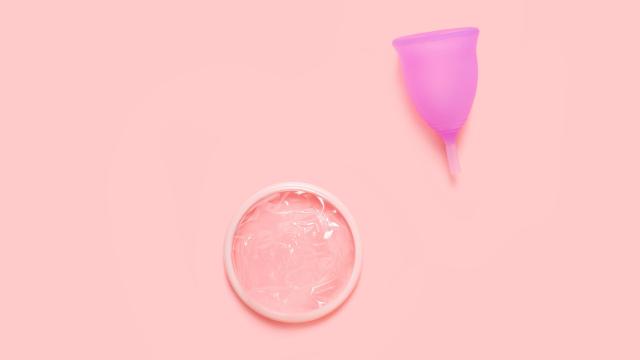Menstrual discs, previously an obscure hippie product, have become something of a trend. Their ads are popping up everywhere, and there are now multiple brands offering the discs. So what’s the big deal, and are they really any better than a cup?
What menstrual discs look and feel like
A menstrual disc takes the form of a flexible ring, maybe three inches wide, with a thin material stretched across it. It’s sort of cup-shaped, but wider and shallower than a typical menstrual cup. If you’re familiar with the contraceptive diaphragm, the size and shape of a menstrual disc will look familiar.
Some discs are disposable, and in the main part of the cup is a thin plastic that feels like a tougher version of what a Ziploc baggie is made of. There are also reusable discs that are made of materials like silicone.
How menstrual discs fit
Where menstrual cups sit upright in the vagina, with their open end upwards, discs are meant to fit snugly over the cervix. (The cervix is where your uterus meets your vagina.)
Since your cervix is located at the front of your vagina, near the top, you insert a disc by holding it vertically, with the opening forward. This means that instead of sitting in the middle of the vagina, it sits like a covering over your cervix.
The biggest advantage of discs over cups — and one of the main benefits that companies like to tout — is that you can have penetrative sex with a disc in. That’s because the ring portion is out of the way, and the cup-like portion is soft and flexible. (The vagina also tends to expand and elongate when you’re aroused, which helps make more room.)
The discs’ manufacturers say that most people either don’t feel it during sex, or feel it but don’t find it uncomfortable. Everybody’s anatomy is different, though. And be aware that even though it fits like a diaphragm, a disc is not considered to be a type of birth control.
What it’s like to wear a menstrual disc
Discs, like cups, have a bit of a learning curve when it comes to inserting them comfortably and avoiding leaks. Read the manufacturer’s instructions about how to insert and when to empty the disc. (Here’s the instructions for FLEX discs, for example.)
Many say you can go 12 hours before replacing or emptying the disc. Back when disposables were the only kind on the market, people would sometimes keep washing and reusing the same disposable. Now there are brands that make reusable discs, so just go for one of those if you want something you don’t have to trash.
One feature that can be either a pro or a con: By bearing down, you can cause the disc to open up and expel some of its contents. Do this over the toilet, and you can partially empty it without having to remove the disc. Just watch out for leaks in other situations, like if you have a coughing fit during a heavy flow day.
As with cups, your anatomy should guide your choices. For example, if you have a low cervix, a disc may not be comfortable. You may need to try different brands to see what works for you. The same caveat applies to any of the benefits one product claims over another. Some people say they have less cramping with a disc than with a cup, for example, but the only way to find out for sure is to give it a try.

Leave a Reply
You must be logged in to post a comment.